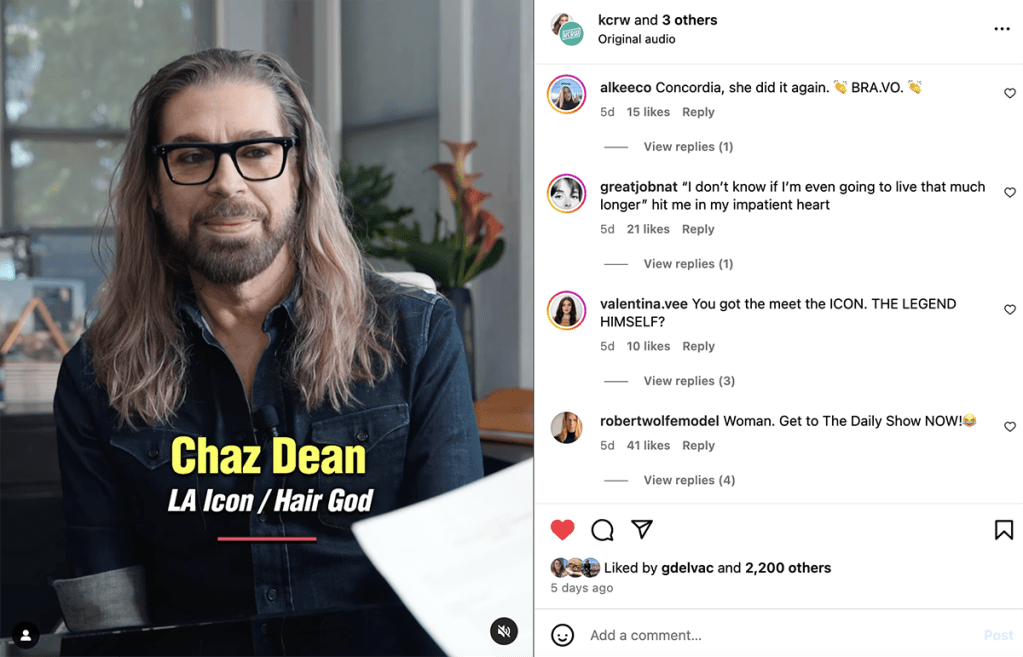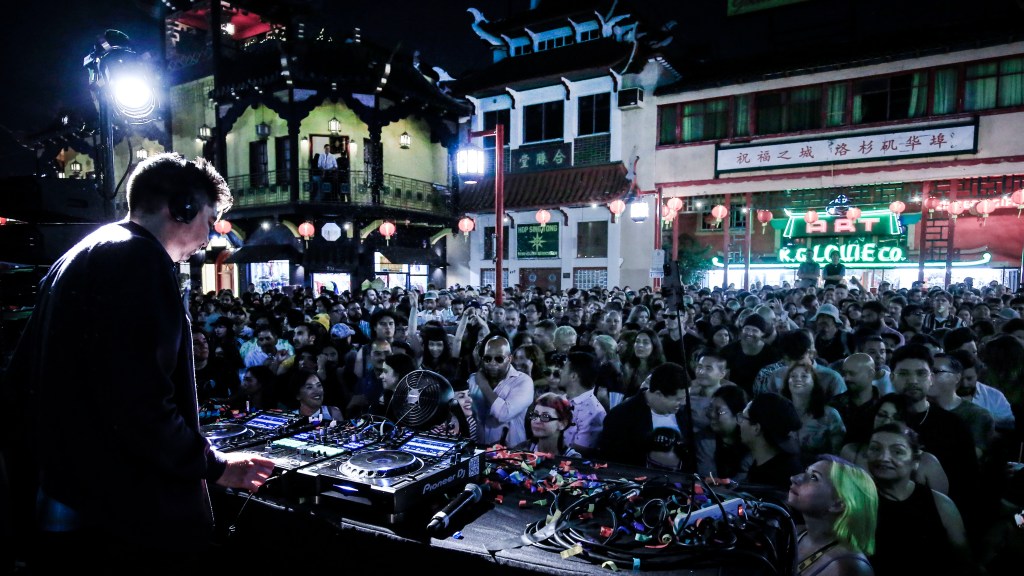Making A Case for Fun In Public Media
Brandweek is coming up soon, this September 23–26! With C-suite leaders from iconic brands keynoting sessions, leading workshops and attending networking events, it’s the place to be for marketing innovation. Don’t miss out—Register now.
Public media knows it has a problem. Since joining the industry two years ago, the most common phrase we’ve heard is “We need to meet people where they are.” They’re right—we have a distribution problem.
But we’re skirting around a bigger issue. You can buy reach. You can put your show on social. But none of it matters if people don’t notice, care, or think about you at all.
Public media, known for its serious journalism and educational programming, wants so badly to be important that it often forgets to be engaging and entertaining. The challenge is, when we meet people where they are, we need them to want to be around us. In this crowded media landscape, it’s too easy to get lost and unnoticed, even with the best of intentions.
In a study by Oracle, 91% of people globally prefer brands to be funny and 88% of people are looking for new experiences to make them smile and laugh. Yet, 95% of business leaders fear humor in consumer interactions.
What if we tried being fun? Being funny? (I’d say, being human, but there are a lot of dull humans). And not just in a small TikTok-sized corner of the organization. We need to inject fun into everything; content and events, interactions with donors, and marketing.
Here are four ways KCRW is meeting the challenge and learnings along the way.
Social-first content is “important”
When public radio thinks of hiring show talent, we default to journalists. To change it up, KCRW collaborated with social media comedian Katherine Ellis, whose fictional character Concordia Shawarma McGraw gained fame with NPR voice impressions while explaining lyrics to popular hits like Snoop Dogg’s “Drop It Like It’s Hot” and Cardi B’s “WAP.”
The social-first, satirical news show “Important Things of Great Importance” takes on LA stories in a goofy way while still teaching audiences something new. Guests include a puppet fox discussing a wildlife overpass over the 101 Freeway, LA billboard icon Chaz Dean talking about brand consistency, and our own KCRW climate reporter Caleigh Wells on algae-killing nanobubbles.

Did we risk alienating our audience by poking fun at ourselves and our colleagues? We closely monitored and tracked audience reaction, tweaking the format as needed. The audience and content teams worked hand-in-hand to see this experiment through.
Its first six episodes on Instagram had two-to-three times more views, twice the interactions, and ten times more new followers per episode compared to KCRW’s average post. The show also consistently reaches a higher percentage of non-KCRW followers, averaging 70%, compared to KCRW’s other content, which typically reaches about 35% of non-followers. Zero paid spend, all organic.
The content isn’t just entertaining—viewers engage with each other’s comments, bonding over inside jokes and recurring themes, which creates a sense of community. They compare the show to programs like “The Daily Show” and “SNL,” stating Concordia’s character is “already an ICON of public radio parody.” KCRW is deep in the comments too. We challenge ourselves to have just as much fun as our viewers.
Marketing can be simplified
When we partnered with the comedic advertising agency Party Land, we knew we wanted a brand campaign that would be unexpected for public media. Most marketing communications stress the key marker of public media: Essential independent journalism. It’s true, but also boring.
We knew two things: KCRW is a lot of people’s first friend in LA, and KCRW makes you a more interesting person.
Our “Get LA’d” campaign was a risk, but that’s why we liked it. It’s simple, shareable, and coy.
Humor fosters community. Those who get it, get it. Those who don’t, at least crane their necks with curiosity. The billboards and digital ads are selfie-friendly, screenshot worthy, and elicit conversation between our audience and staff, increasing KCRW’s visibility with new audiences. There were a couple of grumps. But hey, at least they reacted.
Our Instagram Reel featuring one of the billboards had twice the interactions compared to the average KCRW Instagram post and the highest reach of any post that month, outside of “Important Things of Great Importance.”
Different events require different vibes
People in LA are noncommittal, especially if it means traveling across multiple freeways and finding parking. How can we expect people to show up to our events? Answer: Don’t call it a lecture series—naming matters.
Instead, we promise music, culture, and novelty.

Summer Nights, our popular event series, is our purest form of community building and attracts the most diverse audience across age, race, and neighborhood. We partner with iconic LA cultural hotspots to open their doors late and throw free dance parties featuring our KCRW DJs.
Each event has its own unique flavor, like vibing under the tree-lined laser show at Descanso Gardens, raging with confetti poppers and lion dancers in historic Chinatown, or dancing to cumbia at LA Plaza de Cultura y Artes. I’ve seen people shimmy through art exhibits, babies dancing with massive headphones, an entire crowd chanting Kendrick Lamar’s “Not Like Us,” several first dates, a proposal, and a couple canoodling too close to our merch tent. Everyone is welcome. If that isn’t a public service, I don’t know what is.
In 2023, we had over 100,000 RSVPs to our events, which includes our other free signature events like PieFest & Contest (yes, an entire festival dedicated to pie). This year we’re on pace to reach over 100,000 RSVPs for the Summer Nights series alone. These are 100,000 email addresses that we follow up with to keep the conversation going.
Membership: Text for the hookup
There’s a weird thing that happens when people become donors. All of a sudden, we get all institutional and transactional. Why do we stop being human after we hand them their thank-you tote bag? Why do we only engage when it’s time to ask for money again?
We are piloting a member-only texting service as a new way to consistently engage with our members and increase awareness of our member program and benefits. Knowing how annoying texts are, especially from brands (or political parties), we treat it differently.
First, no asking for money. Second, be yourself. In our case, Nick, our member engagement manager, needs to be himself. He has the member hookups. Free tickets to an upcoming concert. An exclusive track from a KCRW music performance just for members. First-to-know invites to a member-only party that would reach capacity within minutes. No need to be sales-y when you can be the most exciting text message they receive that day.
We currently have over 2,000 members who receive texts from Nick (and other friendly individuals from his team). We have a 99.94% retention rate for those who receive texts. Conclusion: if you text with us, you stay with us.
Throughout all of this, you may have some of the following questions.
What about covering the serious stuff?
It’s much easier to deliver serious news if you’ve already built a fond relationship. When the news is negative, wouldn’t you want it to come from a reassuring place that feels warm and familiar?
What if we illicit cringe?
Don’t get caught up in what is and isn’t funny. Think of humor as a way of being inviting. How do you welcome people in and make them feel comfortable? If a particular flavor of humor doesn’t feel authentic, your audience will notice. Cringe is when something feels forced.
How do I get my boss to greenlight my funny idea?
Use data as much as possible. Know that the public radio audience already trusts you. Surprise them by acting and sounding like a person they’d want to talk to.
Why does it matter?
The public media’s mission has not changed. We’re here to create a more informed, more engaged, more socially cohesive society. We can’t do this if we let the weight of the world’s drudgery bore people to apathy.
Fun is the gateway to curiosity—about each other, new ideas, and the world around them. Fun encourages participation and shared experience. Fun is how we get people to care. It doesn’t get more public service-y than that.
https://www.adweek.com/media/making-a-case-for-fun-in-public-media/